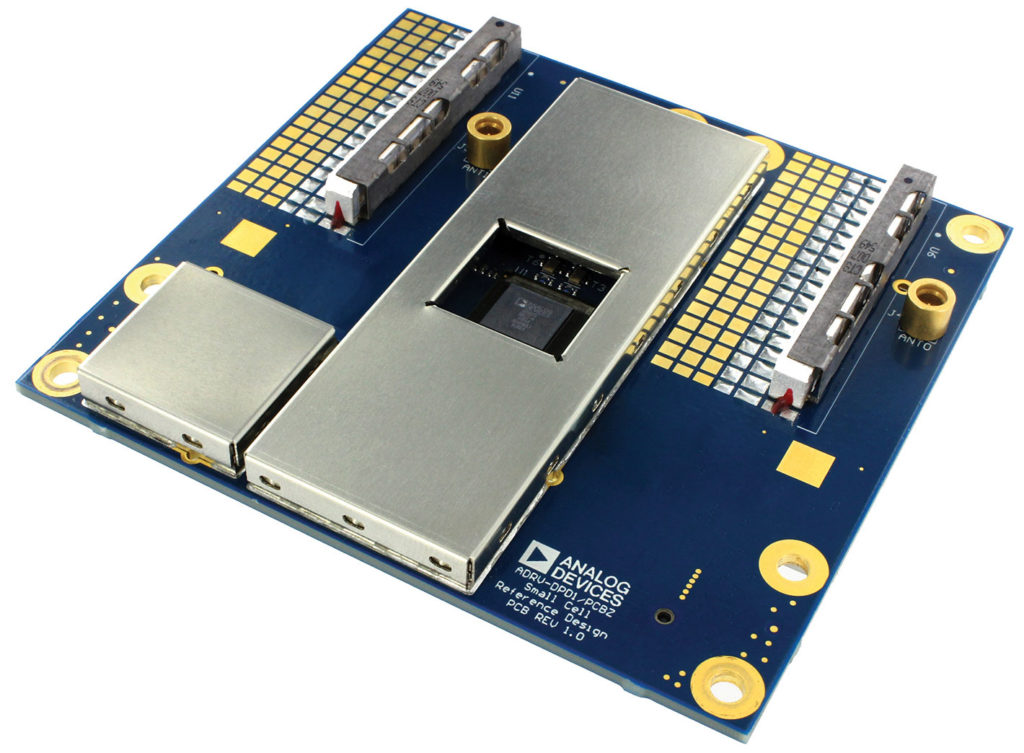Q: What is the current status of 5G communications?
A: The 5G cycle is well underway, with many field trials completed and many others in progress, globally. In the 5G Trial Snapshot Report from the GSA, some 330 separate 5G trials and demonstrations have been identified around the world to date, with over 130 mobile operators announcing 5G trials in 62 countries. Whilst many of these trials focus on demonstrating higher throughput, 5G introduces flexibility and new features that enable new applications and sets the stage for a wireless standard that will carry us into 2030 and beyond.
Q: What about the adoption of 5G communications, its growth and future development?
A: Looking forward, we see no slowing in the generation and consumption of mobile data as video sharing becomes pervasive throughout our society. But the future of connectivity is also about connecting to the world around us as we enter the coming age of machines. We are on the doorstep of an era of digital transformation that will profoundly change the way we live, work and move about daily. Whilst the current smartphone is an interface between humans and information, future devices will actively communicate with each other independent of human interaction. They will monitor the environment around us through a dense network of connected sensors and make active decisions based on that. At the core of this coming digital transformation are highly capable mobile networks connecting everyone and everything with high reliability and low latency.
At the end of 2017, the 3GPP published the first 5G NR specification (Release 15). While this non-standalone specification is the first of many steps in achieving 5G, this enabled SoC vendors to move forward with modems to support the 2019 availability of 5G handsets. Then another milestone was announced by the 3GPP on the completion of the 5G NR standalone specification, which will enable independent deployment of 5G NR networks. While the spectrum of choice varies by region, it is expected that 5G deployments will commercially launch in 2020 and consumers will begin to experience the first benefits of the 5G technology. We expect that 5G massive MIMO will leverage mid-band spectrum in many regions, followed by millimeter wave deployments as this technology matures.
Q: Is 5G enabling new technological developments?
A: While we as engineers tend to focus on the emerging specifications such as bandwidth, latency and such, one of the foundations of 5G is flexibility. If we observe how the specifications are forming, we see the waveforms being defined to enable a range of uses currently envisioned, with provisions for some not even yet imagined.
At a high level, 5G is motivated by the desire to enable three major applications:
- Enhance mobile broadband (eMBB);
- Massive machine type connectivity (mMTC);
- Ultra-reliable low-latency communications (uRLLC).
Currently, much of the industry 5G focus is on enhanced mobile broadband, driving toward high network capacity and higher throughput that uses beamforming techniques in the mid- and high-band spectrum. We are also beginning to see new applications emerge, such as industrial automation, that leverage the low latency features of the 5G network architecture.
Q: How can the industry continue to support 5G technology in the future?
A: Enhanced mobile broadband drives a need for higher data throughput and higher network capacity. Cellular base-station capacity can be increased through three major initiatives: acquiring new spectrum, increasing base station density and improving spectral efficiency. While we continue to see new spectrum made available for mobile use globally, and network density increasing though the addition of small cells, there remains a much-needed improvement in the utilisation of available spectrum.
In recent years, massive MIMO has emerged as a technology that can provide significant improvements in spectral efficiency. It has been demonstrated to provide 3-5 times improvement in mobile data throughput with promise for further improvements.
Massive MIMO is based on the use of many active antenna elements that can be adapted in a coherent manner to accurately deliver a signal to an intended user in space, whilst controlling the interference to other users. The large number of antennae combined with signal processing algorithms enable the systems to essentially take frequency re-use to the micro scale. This introduces a new factor in the frequency re-use equation whereby space is now used to enable the base station to simultaneously deliver independent data streams to multiple users at the same time and in the same spectrum. This results in a large improvement in spectral efficiency, which in turn results in greatly improved throughput for the cell. Figure 1 shows such a system. The antenna physically appears as a panel, on which many radiators (antenna elements) are mounted. Behind each radiator is a radio signal chain.

Figure 1: The massive MIMO concept
Q: What is the current status of the massive MIMO technology?
A: Massive MIMO trials have been completed by many mobile operators globally and initial commercial deployment of this technology are expected to commence in the 2019-2020 timeframe by early adopters to address the most congested areas in their networks.
Going forward, as massive MIMO technology evolves and new features are added in the 3GPP wireless standards, we would expect technology to propagate throughout mobile networks globally.
Q: Does technology bring challenges to the engineering community?
A: In massive-MIMO systems we add many more radio channels to the system scaling from typical 8T8R (eight transmitters, eight receivers) TDD (time division duplex) radio head to a system of 64T64R. Whilst the massive-MIMO systems provide much improvement in base-station capacity, this improvement comes at the cost of higher complexity in the radio head.
Historical radio deployments use passive antenna enclosures fed over cables by remote radio heads. The massive-MIMO physical structure is based on an active antenna architecture whereby the active radio signal chains are now embedded within the antenna assembly. Given that these radio systems are typically tower- or pole-mounted, there are limitations on the allowed size and weight of the active antenna system. Whilst the antenna size is dictated by the antenna element spacing, DC power consumption is also a key consideration affecting the weight of the system.
There are many technical challenges for the radio designer to achieve the required radio performance within the size, weight and power consumption limits.
Q: What is RadioVerse wireless technology?
A: RadioVerse technology is the embodiment of how Analog Devices has applied a system-level approach to bring value to our customers. Our comprehensive bits-to-antenna product portfolio plus system-level expertise enables us to become more than a vendor – we become a partner with our customers to help solve their toughest problems. For example, by engaging and leveraging the RadioVerse ecosystem on our website, customers can rapidly move from concept to prototype all the way through to production.
The AD9375 small-cell reference design is another good example of what you can find in the RadioVerse ecosystem. The reference design shown in Figure 2 includes all the components necessary for the small cell radio, from the SERDES interface right up to the antenna. The design is suitable for indoor small cells with 2T2R 250mW output power per antenna. All radio components are on the board, including the AD9375 with DPD, high-efficiency PAs, LNAs, filters and a power solution. The power consumption is less than 10W and it comes in a very small form factor, sitting comfortably in your hand.

Figure 2: RadioVerse reference design










